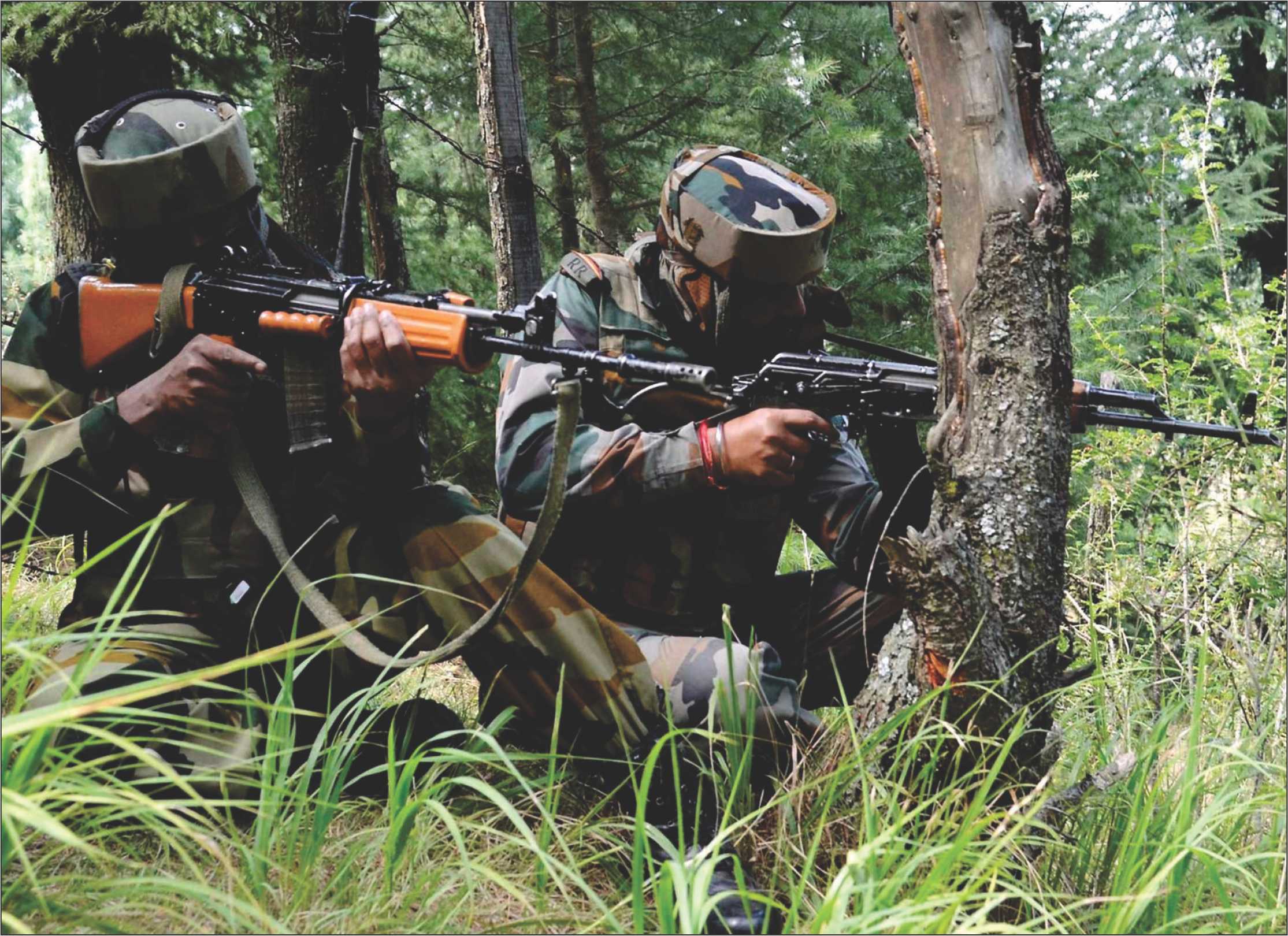Managing intrusion along Indian borders
China has fallen back on an old blueprint to keep India unbalanced. It has revived the insurgencies in the North-east and extended the proxy war to India’s western sector, giving the Pakistan Army encouragement to exacerbate tensions by frequent violations of the ceasefire and deadly cross-LoC attacks. The statement during the Ufa summit in Russia that there is insufficient evidence to jail the persons indicted by India as being the masterminds of the Mumbai 26/11 attack says it all. The BJP led government of Narendra Modi has been left clueless about how the infiltration in Jammu and Kashmir and Punjab is taking place till dead bodies are recovered from deep inland and the post-mortem investigation points to Pakistan. This is followed by the inane dire threats to deal with Islamabad sternly and nothing more. In Chinese lingo this is a crystal-clear case of a paper tiger making empty threats.
To the question what can India do to deal with these threats to its territorial integrity and sovereignty, the answer will be to undo what it has done. Firstly, and with great urgency, the BJP-led National Democratic Alliance government must reverse its decision to cut the strength of the in-process-of-raising Mountain Strike Corps and restore it to 80,000 as originally proposed. Secondly, it must create a new Mountain Division for the Ladakh sector where the Chinese have been particularly active over the past three years.
Infiltration
The reason for this is that while China will keep applying military pressure on India along the Line of Actual Control and stonewall attempts to resolve the border issue, it is egging Pakistan on in its belligerency as seen in the spate of terrorist attacks over the past six months. That these attacks are primarily focused in the Munnawar Tawi (J&K) and the Gurdaspur sector in Punjab where the access to the Indian lines of communication (rail and road) are the closest indicates an attempt to cut the whole of the former princely State by its roots from the rest of India.
The attempt during the latest incursion to blow up the rail link to Jammu underscores the objective of the whole series of events. It was by sheer chance that the attempt was discovered and defused. The current series of attacks are intended to test Indian defences all along the Line of Control and the crucial Gurdaspur sector and it appears that something bigger is in store for India.
The methodology gives the game plan away. The use of snipers to kill the Indian border guards is indicative of a change in tactics from a barrage of bullets to force the guards to keep their heads down while Pakistan pushes infiltrators into India to targeted killings which would be a bigger diversion of attention from the infiltration attempt to medical evacuation of the victim. The use of China-supplied metal-piercing bullets adds a more sinister dimension to the goings-on.
The series of fidayeen attacks by suicide squads without India being able to pinpoint the point of ingress along the International Border or the Line of Control is a very sorry state of affairs. This situation is worse than the negligence shown by the Indian security forces in allowing the infiltration of the Pakistan Army Northern Light Infantry into the Kargil-Drass salient in 1999. It is with the same impunity that the current infiltrations are taking place and there is no excuse that weather conditions had forced Indian troops to vacate the outposts during winter and the Pakistanis had sneaked in. The known vulnerable areas have been left unattended.
If this is happening because of the paucity of manpower in the security forces the NDA government should take the advice tendered by STRATEGIC AFFAIRS in one of earlier editions that dog squads trained to attack intruders should be raised and deployed along the International Borders and the Line of Control particularly in the riverine areas where the fence is difficult to construct or maintain.
This will have the dual-use benefit in that the dogs will intercept both the terrorists as well as arms and drug smugglers who are using these loopholes with impunity. It appears that the advice is not being heeded because there is collusion between the security forces and the smugglers and such dogs will end the racket. This suggestion was made because it is an acknowledged fact that counter-insurgency/counter-terrorism is a manpower-intensive operation and the only conclusion that one can draw is that the Government does not have enough manpower to deploy against both the Pakistanis and the Chinese, both of whom have been indulging in infiltration with gay abandon.
Strengthening defences
It is in this background that STRATEGIC AFFAIRS is once again suggesting that the Government of India restore the cut in the numbers of the new Mountain Strike Corps to 80,000-plus troops, backed by an additional Division for reinforcement in the event of hostilities. A new Division in Ladakh will hopefully end the humiliating deep intrusions by the Chinese that clearly happen because there are no Indian troops in that particular patch of territory in an around the Depsang area. It could become one portion of a pincer with Pakistani troops and the 9000 Chinese troops camouflaged as engineers and workers engaged in laying the economic corridor through Indian territory in the west.
The Sino-Pak collusion is intended to disperse Indian troops thinly along the Line of Actual Control in the northern Himalayas and the Line of Control in western J&K. They are trying to prevent India from being able to redeploy acclimatized forces from one sector to the other and thus be at constant disadvantage which Pakistan can exploit during its frequent incursions.
The Government of India has put the specious plea of a shortage of funds to downsize the Mountain Strike Corps. It was in 1962 that a government could not defend India adequately on this very same contention.
The NDA government needs to prioritize the situation and should focus more on defence preparedness so that it can avoid any future dual front war like conflict.




